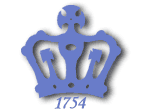 |
 |
 |
 |
|
COVER STORY Having coursework come alive through new media surely excites students. It also can stiffen professors who may struggle with getting the VCR to do anything beyond blink 12:00 but now find they are expected to construct homework assignments guided by a mouse and convert lectures into showtime. Columbia now has a program that turns graduate students into digital assistants to help bridge the schism between what students expect and what teachers will try. The program's origins extend a few years back, when Nick Turro, a professor of chemistry, and Leonard Fine, director of undergraduate labs in the chemistry department, realized that computer programs might make understanding chemistry easier for the students. But what professor has the time, or in many cases the computer skills, to bushwhack into the digital jungle? So the department turned to undergraduates, who teethed on computers in grade school and actually enjoy wrestling unknowns on the computer, especially when they are earning money doing it. The National Science Foundation gave the department a grant of $200,000 to hire students and see what they could create. With additional funding from the provost's office, the program has evolved into a University-wide "student TA" program, where students are hired to help develop computer software, programs and online tutorials for use in courses. "The idea was to tell faculty, 'You tell us what you want to do with new technology and we'll try to find a student who can do it,'" says Turro. Last summer that program was taken over and expanded by the Center for New Media Teaching and Learning. Seventeen graduate students from almost as many departments spent six weeks learning Web development skills and how to use technology to enhance teaching. "We thought it would be good for the graduate students to learn this technology and its pedagogical purposes, and good for our department's efforts to become more technologically adept," says Alan Brinkley, chair of the history department, which sent two students to the program. Students were given a stipend and the use of a laptop for the year. In the fall, the digital assistants returned to their departments, where in addition to their own study and research they spend about 10 hours per week helping faculty develop Web pages and other technological advances for their courses. Training students from individual departments allows the CCNMTL to take advantage of the expertise that graduate students have in particular fields. A history student who works with her professors, for example, already understands the databases and other digital resources that historians use and can offer ideas about using new media in the classroom and for independent study. "It's better to have someone who knows history when they're building a course Web site," Brinkley says. "They're not at our beck and call, but they are available to explain to people what's available and what can be done." Having a resident digital assistant is meant to encourage faculty to explore new media possibilities, and to make help that much closer when the inevitable glitches arise. Not understanding the technology and fearing a meltdown scares off some professors. "All you have to hear is two or three nightmares and it's enough to turn you off," says Turro. Fortunately for Turro, the chemistry department now has a full-time techie. Professors whose departments have their own digital assistants can fear less the digital dark.
|
|
|||||||||||||||||||||||||||||||||||||||||||||||||||||